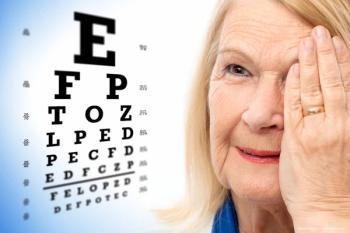
Additional ranibizumab or triamcinolone injections increase visual acuity in DME
Additional injections of ranibizumab and triamcinolone into eyes are effective in patients undergoing focal or grid laser for diabeteic macular oedema (DME).
Additional injections of ranibizumab and triamcinolone into eyes are effective in patients undergoing focal or grid laser for diabeteic macular oedema (DME), according to a study published in Retina.
An investigation led by Dr Joseph Googe, Scheie Eye Institute, University of Pennsylvania, Philadelphia, USA, studied 345 eyes with a visual acuity of 20/320 or better. Each patient had DME or diabetic retinopathy and received focal/grid laser or panretinal photocoagulation. Patients were randomly split into either a placebo group, a 0.5 mg ranibizumab group or a 4mg triamcinolone group. Patients were administered the ranibizumab injection at baseline and at four weeks, triamcinolone injections at baseline and sham at 4 weeks. The follow-up period was between 14 and 56 weeks at the discretion of the investigator.
Improved visual acuity letter score from baseline was identified in both the ranibizumab and triamcinolone groups compared to the sham group. One eye developed endophthalmitis after ranibizumab injections. In 4% of the sham group cerebrovascular or cardiovascular events occurred, along with 7%, and 3% experiencing similar events in the ranibizumab, and triamcinolone groups, respectively.
Based on the results, it was concluded that an additional intravitreal injection of triamicinolone ot two additional intravitreal injections of ranibizumab in the study group gave better visual acuity and lowered DME by week 14. Further studies are needed to determine whether additional intravitreal treatment can be beneficial in the long term.
Newsletter
Get the essential updates shaping the future of pharma manufacturing and compliance—subscribe today to Pharmaceutical Technology and never miss a breakthrough.















































